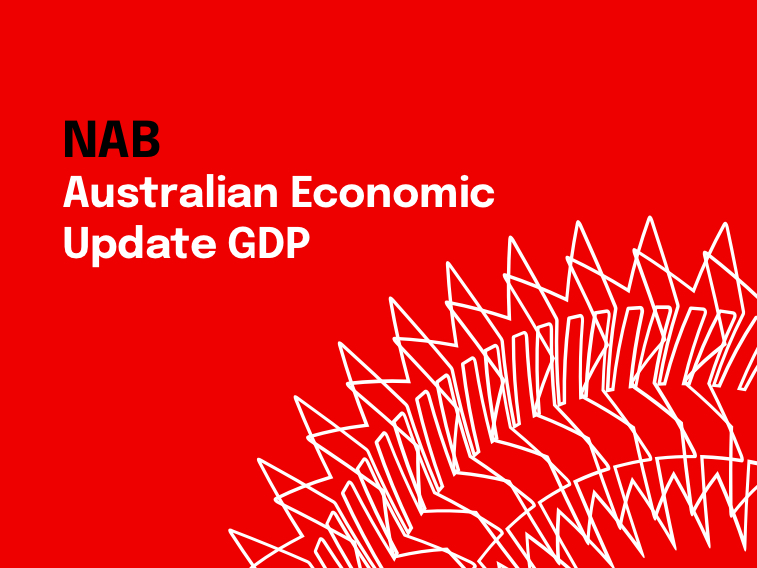NAB sees a 0.2% q/q (2.3% y/y) GDP print for Q1 2023. That would mark the slowest quarter of growth since the lockdown impacted read in Q3 2021. Consumption growth is expected to remain soft and dwelling investment is expected to make little contribution. Business investment is a bright spot, with partials pointing to a 0.3ppt contribution in the quarter. This outcome is broadly in line with our view that growth will slow substantially from around mid-2023 as the full impact of higher rates continues to flow through. The price and wage measures will continue to garner more attention than usual, given the focus on underlying cost pressures and their pass-through to inflation. To date, average earnings measures have provided a similar signal to the headline WPI, while price deflators have certainly reflected the broad-based inflation we have seen in the CPI. Of note will be unit labour costs – though volatile on a quarterly basis – which have tracked strongly on a quarterly basis and over 7% in year-ended terms. For the RBA this set of accounts will provide an important marker on how interest rates continue to flow through household consumption (and disposable income) as well as provide another indicator of wage and inflation pressure.
- GDP is expected to have risen by just 0.2% in Q1 (2.3% y/y). Consumption growth looks to have remained soft, with real retail sales falling by 0.6% in the quarter, though this is likely to be offset by strength in motor vehicle sales as well as services spending not captured in retail sales. Dwelling investment looks to make no contribution based on work done partials with a solid fall in new building partially offset by a rebound in alterations & additions. Business investment partials point to a relatively solid outcome for the quarter supported by a notable increase in equipment investment, while buildings & structures investment also looks to have made a small contribution. Based on monthly trade data, net exports will made a solid subtraction in the quarter owing to strength in real imports.
- Price, wage and productivity measures will also a remain a focus. The broader set of wage and price measures captured in the national accounts will provide further opportunity to assess cost and inflation dynamics – with the consumption, investment and domestic final demand deflators all reflecting the strength and breadth of inflation in recent quarters. The national accounts measures of average earnings growth also accelerated through 2022, though were broadly in line with the narrower wage price index which suggests a pickup in wage growth, but not to excessive levels. However, of note is the unit labour costs measure (productivity adjusted wage costs) which reflect how much wage pressure is pushing on final product prices. With weak productivity outcomes over recent quarters, unit labour costs have risen to over 7% y/y – and this has been reflected in Governor Lowe’s recent comments that productivity needs to pick up in order to sustain current levels of wage growth and ensure inflation returns to target.
- Again, the trade and stocks components are a key source of uncertainty. This reflects the volatility over recent quarters and difficulty in assessing the nominal partial data due to large price swings of key commodities. For now, we have pencilled in a 0.7ppt subtraction from next exports – but it could well be larger. That said, car imports were a key driver of the rise in real imports in the quarter and will be offset elsewhere in the accounts. Elsewhere, inventories have seen large fluctuations associated with the supply chain disruptions and restocking and there may be some lingering impacts. Finally, there are few partials for the services side of consumption, as well as the motor vehicles component, which is not included in retail sales, which we see as offsetting some of the weakness in goods spending, but to what degree remains uncertain.
- Looking forward, we expect growth to edge lower from already low rates in mid 2023 – which sees year-ended growth of just 0.7% in 2023 and only a small improvement to around 1.3% in 2024. They key dynamic will continue to be household spending, where rates and inflation are expected to weigh heavily. The impact of both costs and rates on housing will likely see dwelling investment continue to ease as the existing pipeline in worked through. For now, business investment (particularly buildings and structures) remains positive with a large pipeline of work, and high capacity utilisation. That said forward investment intentions look weak – not really surprising with two years of below trend growth in prospect.
- The accounts will provide an important marker for the RBA. While dated, the accounts provide the most comprehensive picture of household spending (including services) as well as household income dynamics and a broader set of wage and price measures. Up to Q4 the accounts had suggested that activity remained resilient while price pressures were broad-based. Wage pressures were also building, but not excessive – though productivity adjusted wage growth was too high. These factors will be increasingly important as the RBA continues to assess the ongoing impact of rate rises to date, and ultimately the degree of restrictiveness needed to ensure inflation settles back within the target band as transitory factors wane. The Q1 data will be released the day after the board meeting meaning there will be little direct impact next week (other than the signals already garnered from partials), giving the RBA almost a month to assess the set of data. We continue to see the RBA lifting the cash rate to 4.1% by August, with the risk that the Bank goes further.
Read all the insights in the GDP Preview (Q1 2023)

